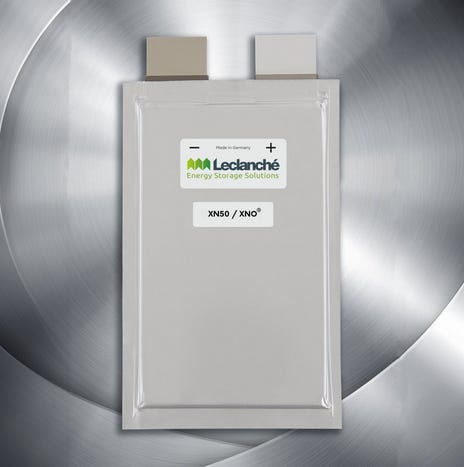The Weekly Potential #4
This week in the energy and materials sectors: lithium mining from the sea, new anodes for batteries, vertical integration, materials bottlenecks in wind energy.
Welcome to the 4th edition of The Weekly Potential. We've spent an exciting month exploring the latest in the energy and materials sectors, and we're grateful for your continued support.
In this week's edition, we delve into mining lithium from the sea, potentially revolutionizing lithium sourcing. We also talk about the ongoing vertical integration in the energy storage sector and the latest advancement in battery anodes that could enhance efficiency and lifespan.
Let's dive in! 🔋
Lithium Horizons is a reader-supported publication. For deeper insights, including in-depth analysis, the latest developments, and expert insights into the energy and materials industries, subscribe below.
Industry Developments
1. Fluence Starts Battery Module Production for Energy Storage
Fluence, a key player in the energy storage industry, has begun manufacturing its own battery modules in the United States. This initiative, located in Utah, uses battery cells sourced from Tennessee, signaling a strategic shift towards greater domestic production and less reliance on international supply chains. The identity of the cell supplier from Tennessee remains undisclosed, but speculation points towards either the Ford-SK Innovation joint venture or the General Motors-LG Energy Solution partnership, both of which have announced cell production facilities in Tennessee.
Typically, companies like Fluence procure battery cells and modules from external partners, but the industry is seeing a trend towards vertical integration, driven by geopolitical considerations. This development underscores Fluence's proactive approach in navigating these changes, aiming to secure supply chain stability and potentially benefit from local content requirements in government incentives.
2. Leclanché Pioneering Niobium Batteries for High-Performance Applications
Leclanché has introduced the XN50, marking the debut of a niobium-based lithium-ion battery cell designed for heavy-duty applications. This innovation, leveraging Echion Technologies' XNO niobium-based anode material, promises a 50% higher energy density than traditional lithium-titanate-oxide (LTO) batteries, alongside an exceptional cycle life of over 10,000 cycles.
Ideal for heavy duty applications in e-mobility, rail, and marine, the XN50 not only enhances performance with fast charging capabilities but also prioritizes safety, reducing potential hazards associated with lithium-ion batteries.
3. Researchers Develop a New Way to Extract Lithium from Sea
Researchers from KAUST have introduced an innovative method for extracting lithium from brines, employing iron phosphate electrodes. This technique allows for the extraction process to occur without a physical barrier between the brine and the lithium-capturing solution, simplifying operations and potentially lowering costs.
In a pilot-scale demonstration, utilizing an electrode surface area of 33.75 square meters, they achieved an 84.0% lithium recovery rate from Dead Sea brine. If this method is further developed, it has the potential to dramatically lower the cost of lithium and therefore batteries themselves.
Paper of the Week
The NREL has put out a paper titled "Materials Used in U.S. Wind Energy Technologies: Quantities and Availability for Two Future Scenarios" which delves into the material requirements for scaling up wind energy capacity in the United States. By using the Renewable Energy Materials Properties Database, researchers assessed the demand and availability of materials essential for wind turbines, such as rare earth elements, steel, and copper.
The findings highlight potential bottlenecks in material supply chains, emphasizing the need for strategic planning to avoid resource constraints. This includes considering domestic sourcing, recycling, and the development of new materials or technologies to mitigate vulnerabilities.
On the Go
In the episode on the advances in lithium extraction from The Battery Technology Podcast, Nick Grundish, executive at EnergyX discusses the problems and solutions of lithium extraction and refining.
As the demand for lithium increases, what happens early in the supply chain becomes more and more important. New technologies can minimize environmental impact of mining lithium.
Read More
Thank you for reading. If you found the post interesting, consider sharing it with your network and subscribing. Such actions help spread the knowledge and support Lithium Horizons.











